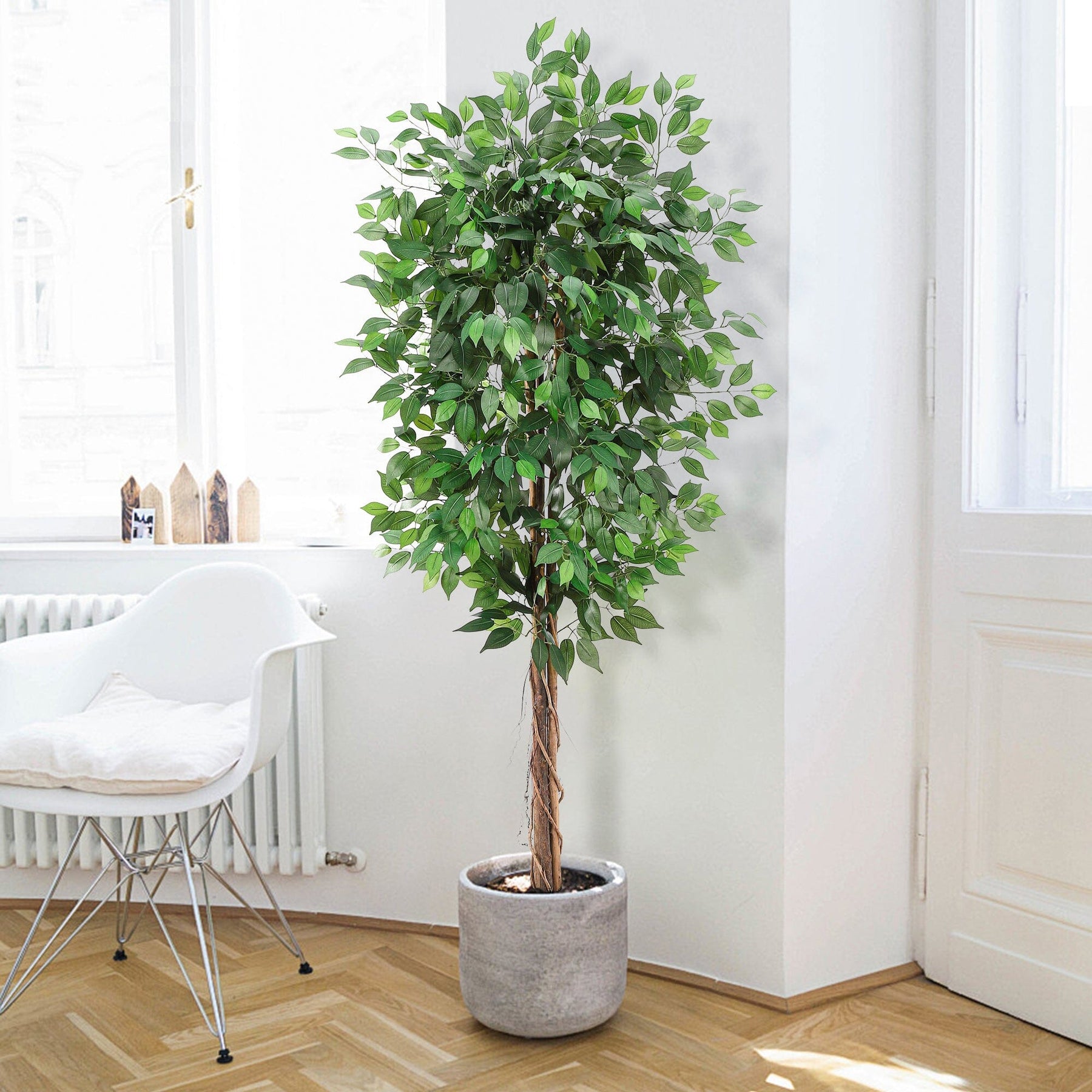When it comes to decorating your home or business spaces, choosing between artificial plants and real plants can raise a key question: which is more cost-effective? In this article, we analyze the initial costs, maintenance costs, and long-term benefits of both options to help you make an informed decision. 💡
💰 Initial Cost: The Starting Investment
The initial cost of a plant depends on its size, variety, and quality. Let's compare the two options:
- Natural plants: A medium-sized live plant can cost between €10 and €50, while large plants or rare varieties can reach several hundred euros.
- Artificial plants: Their cost varies depending on the realism and size. A mid-quality artificial plant typically costs between €30 and €100, while high-end models can exceed €200.
Bottom Line: High-end artificial plants often have a higher initial cost than real plants, but that's only part of the equation.
🛠️ Maintenance Costs: Long-Term Savings
Maintenance costs are a major factor to consider when choosing between artificial plants and real plants.
- Natural plants: These require regular care such as watering, repotting, and sometimes pest control treatments. These costs can reach €50 to €100 per year, depending on the plant.
- Artificial plants: No watering, no soil, and no treatments. They only require occasional dusting, which is a negligible cost.
Conclusion: In the long run, artificial plants are much more economical in terms of maintenance.
⏳ Sustainability: A Long-Term Value
Another key criterion is the lifespan of plants:
- Natural plants: Their lifespan depends on their care and environmental conditions. A plant that is poorly maintained or poorly adapted to its environment can quickly die.
- Artificial plants: With minimal maintenance, they can last for many years without losing their shine.
Bottom Line: Artificial plants offer excellent durability, which can offset their higher initial cost.
🌿 Aesthetics and Flexibility
The visual appearance and flexibility of use of artificial and natural plants also differ:
- Natural plants: Their beauty and authenticity are unparalleled. They purify the air and bring a vibrant touch to your space.
- Artificial plants: Thanks to modern technology, they are extremely realistic and available in an infinite variety of styles, sizes, and colors. They are not limited by light or temperature conditions.
Bottom line: If natural aesthetics are key, real plants win, but artificial ones offer unmatched flexibility.
♻️ Environmental Impact
The choice between artificial and natural plants can also be influenced by ecological considerations:
- Natural plants: They contribute to the ecosystem by absorbing carbon dioxide and producing oxygen. However, their production and transportation can have an environmental impact.
- Artificial plants: Their manufacture often involves non-recyclable materials such as plastic. However, their durability limits their frequent replacement.
Conclusion: Natural plants are more environmentally friendly in the short term, but artificial plants, if used long-term, can be a sustainable option.
💡 Tip: If you choose artificial plants, opt for high-quality models and recycle them at the end of their life to reduce their environmental impact.
Transform your space with this majestic 180cm Artificial Ficus . Perfect for adding a touch of greenery and sophistication, it fits perfectly in a living room, office or entrance. 🌿

🌿 Comparison of Costs of Artificial Plants and Real Plants 🌱
When it comes to decorating your home or business spaces, choosing between artificial plants and real plants can raise a key question: which is more cost-effective? In this article, we analyze the initial costs, maintenance costs, and long-term benefits of both options to help you make an informed decision. 💡
💡 Comparison Table: Artificial Plants vs. Natural Plants
| Criteria | Artificial Plants | Natural Plants |
|---|---|---|
| Initial cost | €30 to €200 | 10 € to 300 € |
| Interview | Occasional dusting | Watering, repotting, treatment |
| Lifetime | Several years | Variable (subject to care) |
| Environmental impact | Less ecological (plastic) | Ecological (absorbs CO₂) |
| Aesthetic | Realistic, flexible | Authentic and natural |
| Adaptability | No light constraint | Depends on the environment |
💰 Cost Analysis
The table highlights the financial differences between artificial plants and real plants:
- Short-term investment: Real plants generally have a lower initial cost, but require regular expenses for maintenance.
- Long-term cost-effectiveness: Artificial plants, although having a higher initial cost, prove to be more economical in the long run due to the absence of maintenance costs.
🌟 Concrete example: A real plant costing €50 and requiring €30 per year of maintenance will cost around €200 over 5 years. A quality artificial plant costing €100 will have no additional costs over the same period.
🌿 Conclusion: Make the Right Choice
Choosing between artificial plants and real plants depends on your priorities:
- Choose artificial plants if you are looking for a durable, low-maintenance solution that will fit into any environment.
- Opt for real plants if you want to enjoy their natural benefits and an authentic living atmosphere.
By carefully weighing upfront costs, maintenance, and your preferences, you'll find the perfect option to enhance your green space. 🌱
🌟 Conclusion: Which Choice Is Best For You?
Choosing between artificial and real plants depends on your priorities. If you're looking for an economical, durable, and low-maintenance solution, artificial plants are ideal. On the other hand, if you prioritize authenticity and immediate ecological impact, natural plants are an excellent choice.
By weighing upfront costs, maintenance, and your specific needs, you can find the perfect solution to enhance your spaces while staying within your budget. 🌿












Leave a comment